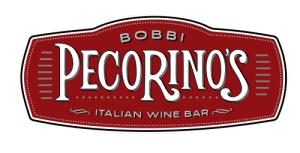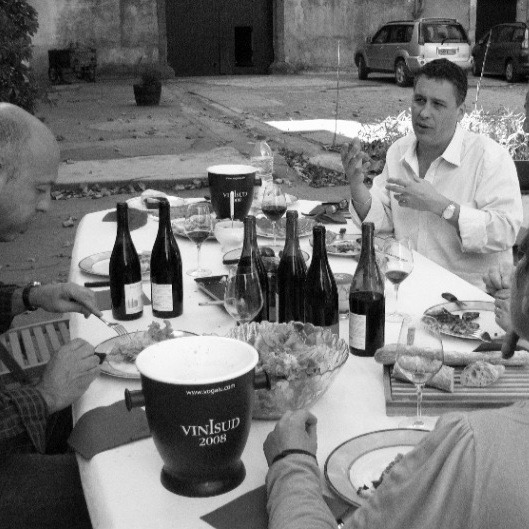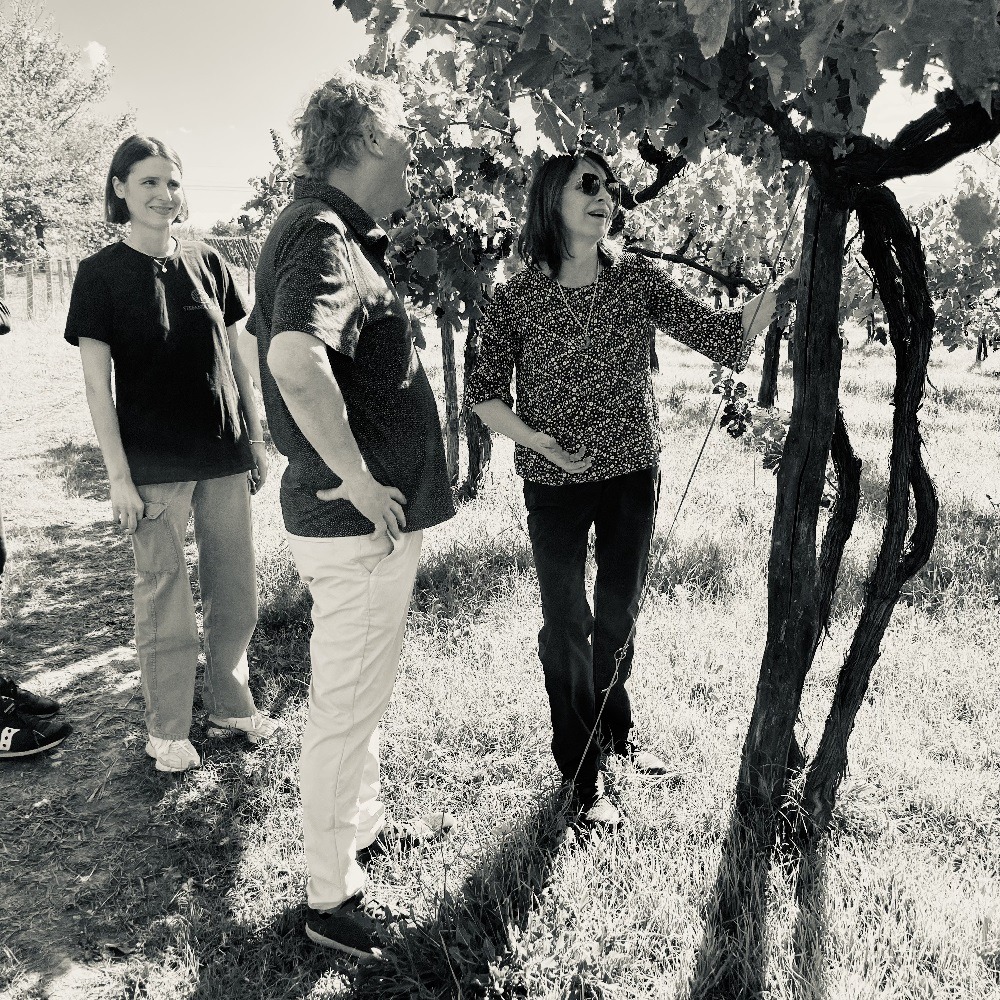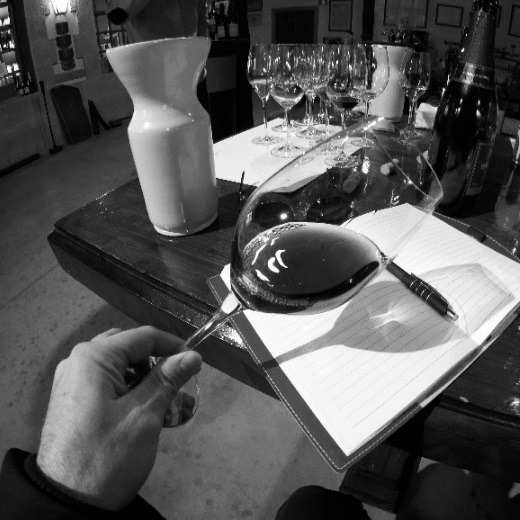At Bobbi Pecorino’s Italian Wine Bar, our primary focus is to root out the extraordinary diversity within the Italian wine culture. Italy is one of the world’s most celebrated wine regions, steeped in a rich history of winemaking that dates back over 4,000 years. From the mountainous north to the sun-soaked southern coastlines, Italy’s diverse climates, soils, and indigenous grape varieties create wines that are as distinct as they are storied.
Italian wines are known for their connection to tradition, their deep expression of terroir, and their unmatched variety of flavors, making each bottle a unique experience. In promoting “Be Wine Curious” our aim is to encourage our friends to explore the diversity which is Italian wine. But what exactly sets Italian wines apart from those of other regions? Let’s explore the factors that make Italian wines truly exceptional.
A Deep-rooted Winemaking Tradition
Italian wines are not just products of the land; they are deeply intertwined with the nation’s cultural and culinary history. Winemaking in Italy began in the Bronze Age, long before the Roman Empire made wine a central part of daily life. The Romans pioneered winemaking techniques like aging wines in amphorae and developed the first wine classifications. Over centuries, Italian families perfected techniques suited to their specific regions, which today has resulted in a wealth of knowledge passed down through generations.
This commitment to tradition is evident in Italy’s strict wine laws, designed to preserve quality and authenticity. The Denominazione di Origine Controllata (DOC) and Denominazione di Origine Controllata e Garantita (DOCG) designations protect each wine’s origin, grape variety, and production methods, ensuring a consistent expression of Italian heritage. For wine enthusiasts, Italy offers a taste of history, where ancient practices coexist with modern innovation to produce wines with character and soul.
A Unique Terroir: Diverse Regions, Distinct Flavors
Italy’s terroir is one of the most varied in the world, giving each wine region its own distinctive profile. The country stretches from the cool Alps in the north to the sun-drenched Mediterranean coastlines in the south, with a wide range of elevations, climates, and soil types in between. Italy’s long, narrow shape allows it to encompass various microclimates, each perfectly suited to specific grape varieties.
For instance, in the north, the Alpine region of Alto Adige benefits from cooler temperatures and high elevations, producing white wines like Sauvignon Blanc, Riolla Gialla, Pinot Grigio and Friulano with bright acidity and clean minerality. In contrast, Tuscany’s rolling hills and warm climate produce Sangiovese-based wines like Chianti and Brunello di Montalcino, known for their bold flavors, earthy undertones, and balanced acidity.
Soil composition also varies dramatically across Italy, adding unique mineral characteristics to each wine. Volcanic soils around Mount Etna in Sicily impart wines with minerality, while limestone-rich soils in Piedmont contribute to Barolo and Barbaresco’s elegant structure and complexity. This diversity of terroir allows each region’s unique environmental factors to shine through, creating wines that are unmistakably Italian and tied to their place of origin.
Indigenous Grape Varieties: Italy’s Unique Vinous Heritage
Italy’s dedication to cultivating and preserving indigenous grapes means each wine carries a distinct regional flavor that can’t be replicated anywhere else. Italy boasts over 500 documented grape varieties—many of them native to the country and found almost nowhere else in the world. This extraordinary diversity offers an unmatched array of flavors, aromas, and textures that make Italian wines a captivating journey for enthusiasts. Each indigenous grape has evolved over centuries to thrive in its specific region, shaped by unique soils and climates. Here’s a glimpse into some of Italy’s iconic varieties:
- Nebbiolo: Known as the noble grape of Barolo and Barbaresco in Piedmont, Nebbiolo creates wines with complex aromas of cherry, rose, and tar, along with intense tannins and high acidity. Often referred to as the “wine of kings,” Nebbiolo is celebrated for its depth, elegance, and aging potential.
- Sangiovese: Italy’s most widely planted grape, Sangiovese is the foundation of Chianti, Brunello di Montalcino, and Vino Nobile di Montepulciano. These wines offer vibrant cherry and red fruit notes, balanced by earthy and herbal undertones, and possess a natural acidity that harmonizes beautifully with Italian cuisine.
- Aglianico: This ancient grape flourishes in the southern regions of Campania and Basilicata, producing bold, tannic wines with notes of black cherry, smoke, and leather. Known as the “Barolo of the South,” Aglianico wines are structured, complex, and age-worthy. Locals proudly counter that Barolo is actually the “Aglianico of the North!”
- Vermentino, Cortese, and Fiano: Italian white wines are equally diverse, with the crisp and floral Vermentino from Liguria and Sardinia, the mineral-rich Gavi made from Cortese in Piedmont, and the lush, aromatic Fiano from Campania.
These well-known varieties are just the beginning. Italy’s expansive catalog of native grapes—each with a unique story and sensory profile—allows for endless exploration and discovery in Italian wine. That is why Bobbi Pecorino’s motto is “Be Wine Curious” – to encourage our friends to sample by the glass the larger array of lesser-known native grapes.
Grapes like Grillo found in Cantine Rallo’s “Bianco Maggiore” sourced from the terraced vineyards of Alcamo located on the seaside on Sicily’s western coast.https://www.aziendaagricolarallo.it/en/cantine-rallo/ Or the Turbiana grape used in the production of Lugana DOC from the shores of Lake Garda found in Cascina Maddalena’s brilliant white wine “Capotesta” https://www.cascinamaddalenalugana.com What about Garganega found in the unique micro-climate and volcanic soils of Monteforte d’Alpone high above Soave? We found the top expression of this unique grape while pouring Franchetto’s stunning Soave Superiore “Recorbian”! https://cantinafranchetto.com/en/
Have you tasted a Nerello Mascalese grape grown on the hillside of Sicily’s famous Mt. Etna? Found in the lately popular Etna Rosso DOC, it’s light pigmentation and delicate flavours seem to contradict the hot and dry climate of Sicily. Massimo Lentsch’s “San Teodoro”https://massimolentsch.it/en is a crowd favourite at Bobbi Pecorino’s as it’s often featured by the glass. Another red indigenous grape often poured by the glass is a staff favourite Nero di Troia from Antica Enotria https://anticaenotria.it native to the region of Puglia.
It would truly take a lifetime to explore the full spectrum of native and indigenous Italian grapes but what a great journey it would be! At Bobbi Pecorino’s we strive to encourage being wine curious and promoting that journey offering many of these grapes by the glass.
Italy’s Iconic Wine Regions and Beyond
While Italy’s most famous wine regions—like Piedmont, Tuscany, Veneto, and Sicily—draw much of the spotlight, lesser-known areas offer equally intriguing wines shaped by unique terroirs, revealing a treasure trove of indigenous grape varieties and flavors that showcase the diversity of Italian winemaking. Some of these hidden gems include Aosta Valley, Italy’s smallest wine region nestled in the Alps, where high-altitude vineyards produce Petite Arvine and Prié Blanc, fresh, floral whites with vibrant acidity and minerality, along with Fumin, an earthy red with smoky notes.
In Liguria, the steep, terraced vineyards along the Mediterranean coast foster Pigato and Vermentino, crisp whites with distinctive saline and herbal nuances, while Rossese, a local red, brings light, fragrant aromas of red berries and wild herbs.
Friuli Venezia Giulia, near the Slovenian border, draws on a rich cultural winemaking heritage to produce Ribolla Gialla and Friulano, whites with layers of orchard fruit, almonds, and minerals, alongside Refosco, an indigenous red with spicy, dark berry flavors. Umbria, often overshadowed by neighboring Tuscany, delivers robust and complex reds such as Sagrantino, a tannic variety with notes of blackberry, leather, and earth that mirrors the richness of the local soils, as well as Grechetto, a crisp white with refreshing flavors of green apple and citrus.
Further south, Basilicata offers wines shaped by volcanic soils surrounding Mount Vulture, notably Aglianico del Vulture, a bold, structured red that reveals dark fruit, tobacco, and mineral characteristics with remarkable aging potential. Each of these lesser-known regions offers a unique expression of Italian terroir and winemaking tradition, providing wine enthusiasts a deeper, often unexpected, taste of Italy.
Why Italian Wines Remain Popular Worldwide
Italian wines have a timeless appeal, captivating wine lovers across the globe. They offer something for everyone, from affordable, approachable options to rare, age-worthy collectibles. The combination of tradition, terroir, and diversity means there’s always something new to discover, whether it’s a classic Barolo from Piedmont, an organic Vermentino from Sardinia, or a natural Nero d’Avola from Sicily.
For many, Italian wine represents a journey — an opportunity to explore the landscape, culture, and history of Italy through each sip. As the world of wine continues to evolve, Italy remains a cornerstone of winemaking excellence, offering an experience that is authentic, diverse, and deeply connected to its roots.
Italian wines offer an unparalleled experience of place and tradition. With each bottle, you’re not just tasting wine; you’re experiencing a slice of Italian heritage, the flavors of the land, and the dedication of winemakers who honor centuries-old traditions. Italy’s unique approach to winemaking, its emphasis on indigenous varieties, and its respect for terroir all contribute to wines that are unmistakably Italian, making them an enduring choice for wine lovers around the world.



